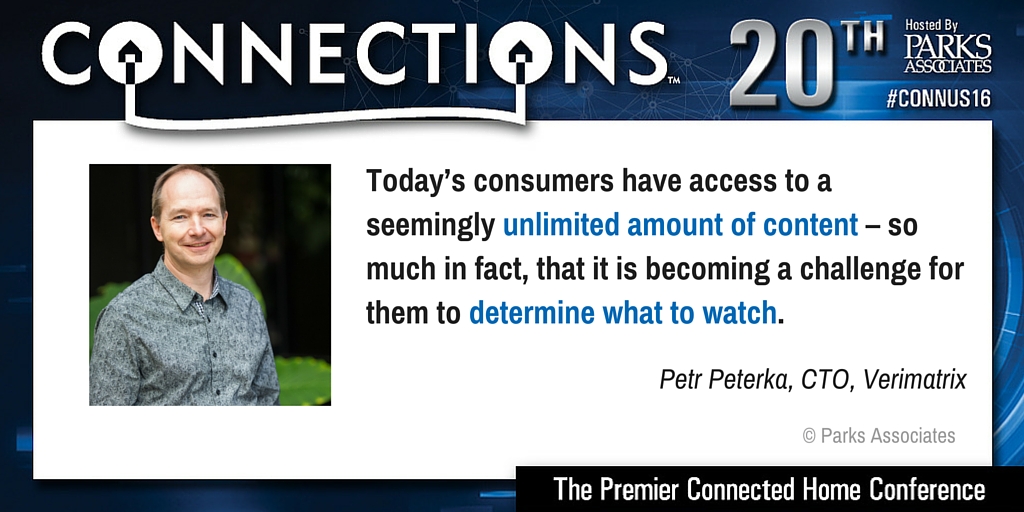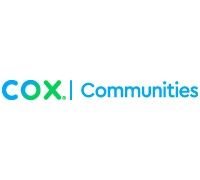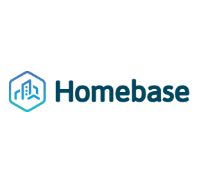Disparity between streaming devices adds a lot of complexity to the user experience: Insights from Verimatrix
Petr Peterka, CTO, Verimatrix, provides insight on several key industry trends for Parks Associates’ 20th-annual CONNECTIONS Conference, which will be held May 24-26 in San Francisco:
How is your company engaging consumers through new technology solutions?
As the pay-TV industry continues to evolve, Verimatrix’s focus remains to secure and enhance revenue for multi-network, multi-screen digital TV services around the globe. It is critical that our services are able to protect the consumption of content of any type, including premium and UHD services, on all streaming devices.
Today’s consumers have access to a seemingly unlimited amount of content – so much in fact, that it is becoming a challenge for them to determine what to watch. At Verimatrix, we see a demand for content providers to better understand users’ preferences. We are working with them to make more optimal recommendations to their subscribers, ultimately improving the user experience while still protecting privacy.
What is the biggest change you have seen in the past year in the connected home and entertainment industries?
So much has changed since the pay-TV consumers of yesterday were limited to the content provided by their neighborhood operators. New technologies inside of the home have helped make the video consumption experience extremely customizable to the end user. Today, each subscriber has the power to choose how they want their content delivered and where it will be accessed. For example, they can pause a scene on a tablet in the bedroom and resume from the same instant from the smart TV in their living room.
What do you think is the biggest driver for the connected consumer market?
The convenience factor presents a significant motivator for the connected consumer market, and it continues to drive the pay-TV industry’s lifelong quest for a user experience that is as seamless as possible.
For example, back when digital TV was becoming the norm, it initially took a few seconds to change the channel. It quickly became clear that such a slight inconvenience was capable of causing a major disturbance to the viewing experience. Today’s subscribers are facing a similar challenge; although they have access to more streams of content than ever before possible, there is no unified navigation across multiple delivery options. If a consumer wants to watch a specific movie, each streaming service needs to be searched individually, oftentimes from the inconvenience of the TV remote control.
What is the greatest challenge for the connected home industry in the next year?
The challenge remains to interconnect these devices so they require users less effort together than they would apart. For the pay-TV industry specifically, the disparity between streaming devices adds a lot of complexity to the user experience, making the process of locating a certain program a time-consuming experience. Unifying such devices has become an important priority that is crucial to long-term success.

Peterka will speak on the session “Risky Business: Piracy and Protecting Content in an OTT World” on Wednesday, May 25 at 11:00 a.m. Other speakers on the panel include AkamaiTechnologies, ARRIS, Digital Entertainment Content Ecosystem, and NAGRA.
For more information on CONNECTIONS, visit www.connectionsus.com or register by clicking here.
Next: Educated consumers will discover what type of smart home works best: Insights from Icontrol Networks
Previous: 91% of specified smart home device owners used a smartphone or tablet for smart programmable thermostats

















